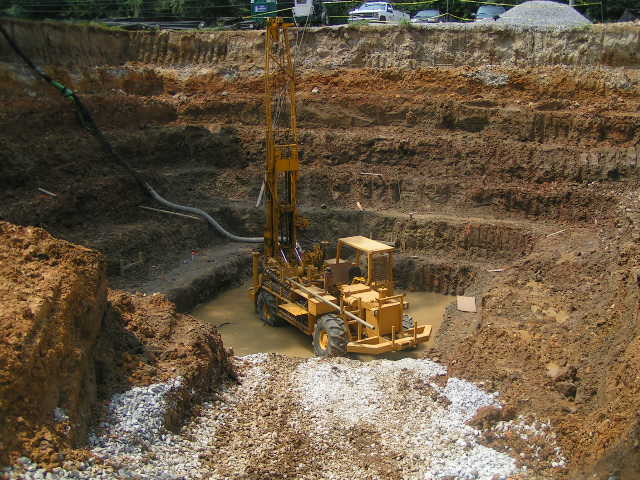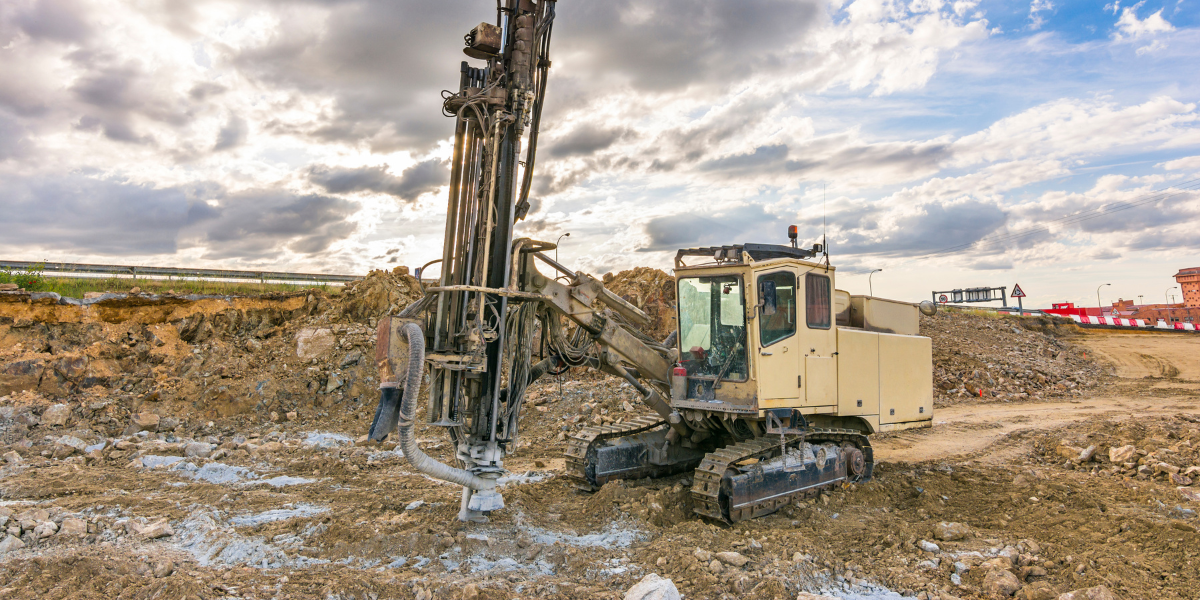Comprehensive Geotechnical Works to Make Certain Website Security
Wiki Article
A Thorough Evaluation of the Providers Offered by Consulting Engineers in the Area of Geotechnical Engineering: From Site Investigation to Job Implementation
Consulting designers in geotechnical design play a crucial duty in the effective implementation of construction projects, starting with detailed site examinations that disclose important subsurface problems. Their competence extends to dirt residential or commercial property assessments, environmental effect evaluations, and the mindful surveillance of task application, making sure positioning with security and sustainability standards.Value of Geotechnical Design
Geotechnical engineering is an important self-control that underpins the safety and sustainability of civil infrastructure tasks. By recognizing the mechanical habits of soil and rock products, geotechnical designers analyze the suitability of sites for numerous buildings, including structures, bridges, and dams. This essential analysis makes certain that structures can endure environmental variables and tons without experiencing failure.The value of geotechnical engineering expands beyond mere architectural security; it also incorporates environmental stewardship. Proper geotechnical evaluations add to decreasing the environmental influence of building. Through cautious evaluation of dirt homes and groundwater problems, engineers can create foundations and maintaining structures that reduce threats such as erosion and landslides, promoting long-term stability.
Additionally, geotechnical engineering plays a vital role in job expense monitoring. geotechnical works. By determining possible problems early in the style phase, engineers can suggest ideal solutions, hence avoiding expensive delays and redesigns throughout building. This positive technique not just boosts task performance but additionally substantially minimizes threats connected with unexpected site conditions
Website Investigation Methods
Effective site investigation methods are essential for gathering accurate data regarding subsurface conditions prior to construction. These methods assist in the understanding of the geological and hydrological setting, which is critical for ensuring the stability and safety of proposed structures.Common methods utilized in site examinations consist of borehole exploration, which enables designers to remove soil examples at various depths, offering understandings into stratification and product types. In enhancement, geophysical surveys, such as seismic refraction and electric resistivity, deal non-invasive ways to assess subsurface qualities over larger areas. These methods can help recognize abnormalities without substantial excavation.
Examination pits are one more important technique, giving straight observation of soil layers and enabling in-situ screening. geotechnical works. This technique is specifically valuable for superficial excavations and can help assess groundwater degrees. Moreover, cone penetration examinations (CPT) are significantly used, as they provide continual accounts of soil resistance, which aids in establishing dirt strength and layering.
Each of these methods plays an important duty in developing a comprehensive understanding of website conditions, enabling consulting engineers to make enlightened decisions and recommendations throughout the job lifecycle. Accurate information collection throughout the website examination stage is crucial to mitigating dangers and making certain effective project execution.
Dirt Residential Property Assessment

The assessment process normally entails a combination of research laboratory examinations and field investigations. Key homes such as shear stamina, compressibility, leaks in the structure, and wetness material are examined to figure out the dirt's viability for building and construction objectives. Standard examinations, consisting of the Atterberg restrictions, Proctor compaction, and triaxial shear examinations, are frequently utilized to gather data on soil behavior.
In addition to these examinations, in-situ approaches such as the Requirement Penetration Test (SPT) and Cone Infiltration Examination (CPT) use useful insights into soil stratigraphy and thickness. The outcomes of these evaluations inform engineers about potential obstacles, such as dirt liquefaction or settlement, enabling them to create suitable mitigation approaches.
Environmental Influence Examination
Environmental influence assessment plays a vital function in the planning and execution of design tasks, especially in geotechnical engineering. This process includes examining the possible ecological consequences of suggested tasks on dirt, water, air top quality, and bordering ecological communities. Consulting engineers make use of numerous methods, consisting of site analyses, modeling, and field studies, to identify and measure these effects.The examination typically starts with the identification of baseline environmental problems, which acts as a referral for anticipating possible modifications. Designers evaluate factors such as erosion, groundwater contamination, and environment disruption, ensuring that all relevant ecological regulations and standards are stuck to civil geotechnical engineering throughout the task lifecycle. Stakeholder engagement is additionally an integral component of the evaluation procedure, as it promotes interaction between project designers, neighborhood communities, and regulative bodies.
Moreover, reduction strategies are developed to attend to recognized impacts, allowing engineers to suggest choices or modifications to forecast styles that improve sustainability. This aggressive approach not only reduces negative impacts on the setting yet also promotes public count on and conformity with ecological regulation. Inevitably, reliable ecological influence evaluation strengthens the overall stability and practicality of geotechnical engineering projects, supporting accountable advancement methods.
Task Application and Monitoring

Monitoring is a crucial element of task implementation. Designers make use of various strategies, such as instrumentation and field examinations, to assess soil actions and structural reactions in real-time. This continual monitoring allows the recognition of any deviations from anticipated efficiency, allowing for prompt treatments to mitigate dangers.
Furthermore, getting in touch with designers preserve open interaction with contractors and stakeholders throughout the process. Routine website inspections and report card ensure that all events are educated about project condition and any type of arising problems. By promoting collaboration and transparency, consulting designers promote a more reliable application process, consequently improving project end results.
Eventually, effective project application and surveillance not just promote safety and top quality standards but also add to the total success of geotechnical projects, ensuring they fulfill their designated purposes sustainably and sensibly.

Final Thought
In final thought, the function of seeking advice from designers in geotechnical design incorporates an essential series of solutions that make certain job success. Eventually, the complex contributions of consulting engineers are vital in dealing with the complexities of geotechnical challenges in modern design tasks.Report this wiki page